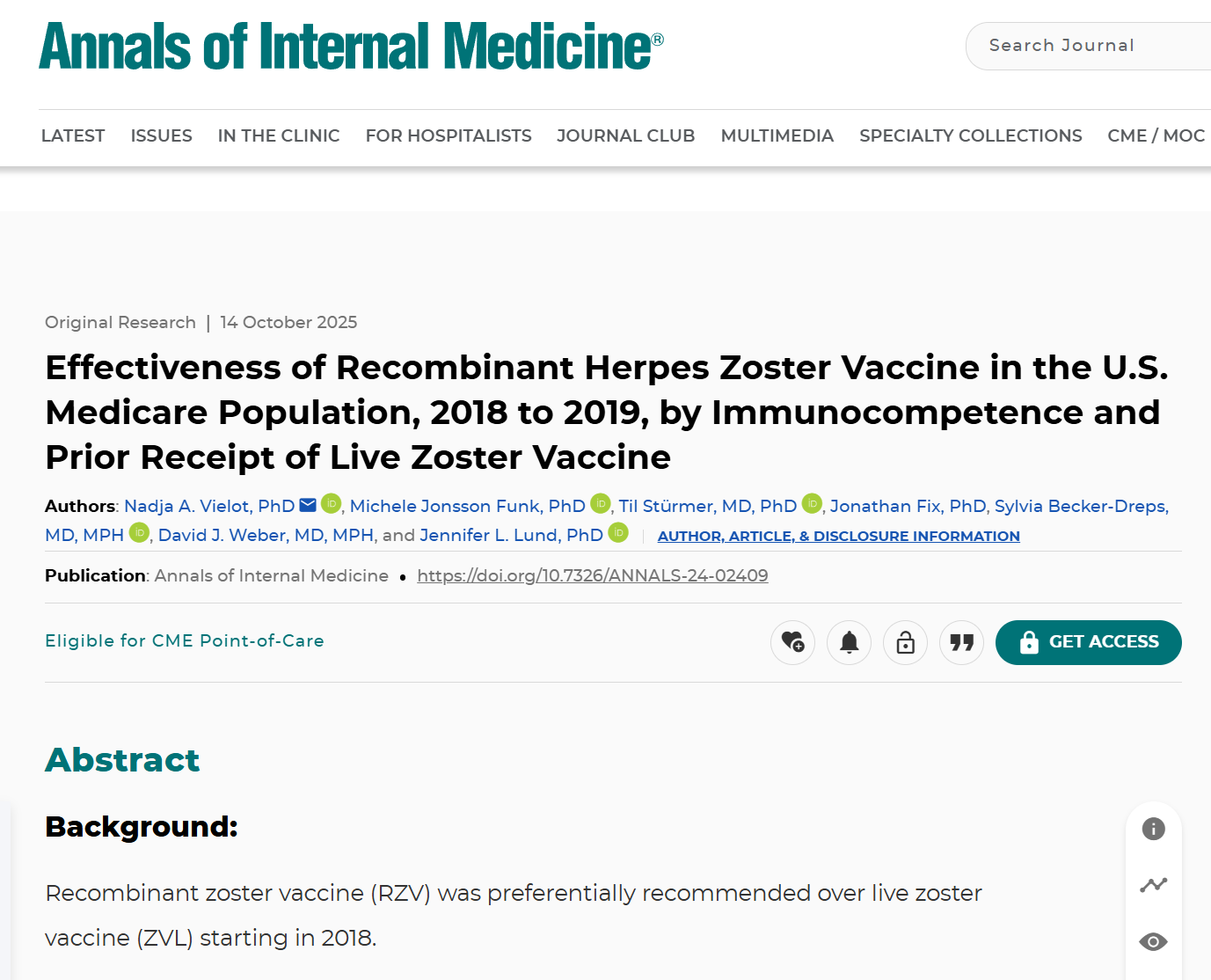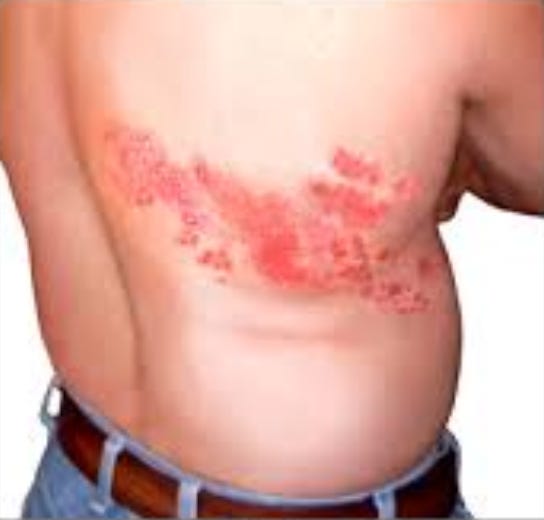Shingles Vaccine Theoretical Efficacy Down to 56%
Enthusiasm Dropping as More Shingles Pop Up in Vaccinated
By Peter A. McCullough, MD, MPH
About 10 years ago I took the shingles vaccine Zostavax® at my doctor’s recommendation. I had chicken pox as a child and never thought much about shingles. I remember my arm blew up a like a red swollen log for days after the live attenuated vaccine. I wondered if I had any benefit today.
Vielot et al took 12 trials of the zoster vaccine and used Medicare claims to identify cases of shingles;
Vaccine effectiveness against any HZ (herpes zoster) outcome was 56.1% (95% CI, 53.1% to 59.0%), with similar VE between immunocompetent (56.5% [CI, 53.2% to 59.5%]) and immunocompromised (54.2% [CI, 44.7% to 62.1%]) individuals. Individuals vaccinated with ZVL in the past 10 years benefited from RZV. A second RZV dose conferred an additional 67.9% effectiveness against any HZ outcome.
So even a booster, which I have declined, would only push theoretical protection to 68% for a few years. In 2025, the only shingles vaccine available in the US is Shingrix. The older vaccine, Zostavax, was discontinued in the US in 2020. The main lesson here is don’t expect a shingles vaccine to fully protect against this painful illness. In my view it is better to stay in good shape, avoid serious intercurrent illness, and seek early treatment with valacyclovir and prednisone if Zoster strikes.
Please subscribe to FOCAL POINTS as a paying ($5 monthly) or founder member so we can continue to bring you the truth.
Peter A. McCullough, MD, MPH
FOCAL POINTS has partnered with Patriot Mobile to defend your medical freedom. Join Patriot Mobile today!
Nadja A. Vielot, Michele Jonsson Funk, Til Stürmer, et al. Effectiveness of Recombinant Herpes Zoster Vaccine in the U.S. Medicare Population, 2018 to 2019, by Immunocompetence and Prior Receipt of Live Zoster Vaccine. Ann Intern Med. [Epub 14 October 2025]. doi:10.7326/ANNALS-24-02409






It's important to know that the Zostavax shot contained whole replication competent varicella viruses that could spread to others, and resulted in full blown chickenpox in some adults who got the shot, so they stopped doing that. The MMRV shot given to children also contains whole replication competent measles, mumps, rubella, and varicella viruses, but we’re still doing that to children.
Zostavax was replaced with a recombinant zoster shot (SHINGRIX) that is supposedly safer because it contains a viral protein that is not biologically active (will not bind to human cells) and contains an adjuvant (AS01B) that is safe. I'm not buying that narrative. The protein in the shot is part of the varicella-zoster virus called gE. How do they get that protein? The gE gene is inserted into a plasmid (a circular DNA molecule) and then introduced into host cells—typically Chinese Hamster Ovary (CHO) cells or yeast cells (specific to the manufacturer). How do we know for sure that there is no hamster DNA in the shot? We don't. DNA plasmids are notorious for finding their way into shots, as we saw with the covid shot. That gE protein by itself won't bind to human cells, but it will bind to an enzyme that, when combined with it, will attach to human cells. This will cause an inflammatory immune response that will result in various levels of tissue destruction inside the body, hence adverse reactions. Nerve tissue and Guillain-Barre Syndrome is mentioned in the post marketing section of the vaccine package insert. The adjuvant AS01B combines MPL and QS21. QS21 is extracted from the bark of the Quillaja saponaria tree native to Chile. MPL is part of salmonella bacteria. Both of those substances are toxic. All adjuvants are toxic, or they wouldn't work. 1 in 3 people will experience a shingles rash at some point in their life, usually when they get really stressed out. I had one and it was no big deal. I'll risk a painful rash over Guillain-Barre Syndrome any day, but that's me.
Overlooked in the debate about the efficacy of viral vaccines is the comparison to interventions that strengthen terrain factors. These studies are rarely funded, and hence not often done. I would propose that individuals who have better nutrition, better lifestyle measurements, such as exercise, exposure to sunlight, regular detoxification or who live in less toxic environments have superior protection from viral diseases than those who lack similarly strengthening of terrain factors. My evidence: the historical record of infectious diseases in the first half of the twentieth century, outlined neatly in McCullough and Leake's own book, Vaccines: Mythology, Ideology and Reality. Until the studies get done, we will be forever debating the degree to which vaccines are useful instruments of prevention, while the solution, improving terrain factors, languishes in darkness.